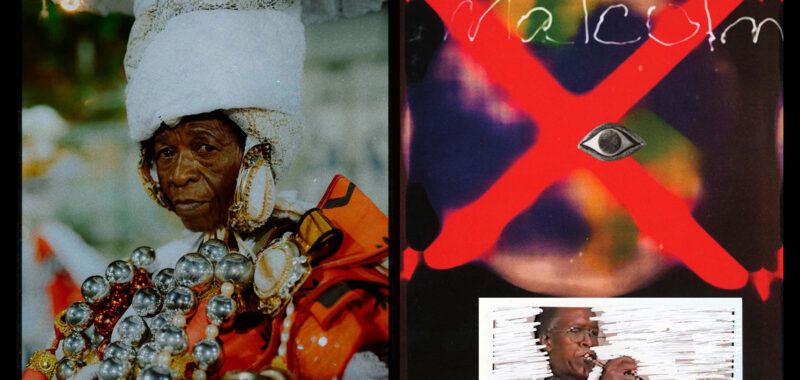Malcolm X’s name alone evokes an array of images and social connotations that anchor him in the public zeitgeist as a hyper-militant Black man, provoked by racism yet driven by self-determination. Unlike other dearly beloved leaders and writers of the modernist era such as Toni Morrison and James Baldwin — whose life’s work has arguably been overdubbed — Malcolm X is rarely afforded the same dimensionality. That is, until now.
Aptly titled Mapping Malcolm (Columbia Books on Architecture and the City), a new essay collection charts the topography of the political leader’s life and ever-evolving stances toward politics, religion, and love. By exploring the ways Malcolm X was shaped by the context of his built environment, jumping from geographical markers from Nebraska to Harlem in the years before his assassination in 1965, editor Najha Zigbi-Johnson and a series of contributors — including writers, artists, and activists — offer up a blueprint to redesign our world.
From the gilded typeface to the maroon cover, the book’s design by Albert Hicks IV and Marcus Washington Jr. of Ayem immediately plants us in emblems of Islamic faith that orient the reader to a tender experience with their subject. The impassioned conversations, speculative essays, and yielding artworks within mimic the intimacy of reading holy scripture.

But in this case, converting the reader is the point. The book oscillates between two transitory junctures of Malcolm X’s political awakening: how he found the Nation of Islam to become a Black nationalist, and how he left it for Sunni Islam and to become a human rights advocate, fighting against global imperialism. In her essay “Moving in Thought: Malcolm X and Black Space-Time,” curator Ladi’Sasha Jones outlines the transformative power of the firebrand’s multi-scalar humanitarianism, which led him to establish the Organization of Afro-American Unity in 1964.
Elsewhere in the book, a transcript of a conversation between scholars Lisa Beyeler-Yvarra and Denise Lim underscores the interracial solidarity between Malcolm X and Japanese-American activist Yuri Kochiyama, whose granddaughter Akemi Kochiyama is another featured contributor. Archival images of Kochiyama in her Manhattanville projects apartment, which is decorated with protest ephemera and was a site of abolitionist meetings of which Malcolm X was a part, have been remodeled by Zakiyyah Haffejee and Adam Osman as a 3D diagram to emphasize how the space also functioned as a library and community center. In the moments we see his comrades shine, we remember that the sun doesn’t rise and set on Malcolm X alone.
Urban studies scholar Darien Alexander Williams takes a different tack, instead highlighting Malcolm X’s impact on revolutionary Black music through the likes of drummer Max Roach and singer Abbey Lincoln, providing a playlist one can sit with to embrace liberation through sound. Such critical reframing of Malcolm X’s complex legacy warps a traditional sense of place, reminding us of our capacity to wholly transform the physical structures we inhabit through daily acts of defiance.

Mapping Malcolm (2024), edited by Najha Zigbi-Johnson, is published by Columbia Books on Architecture and the City, and is available online and through independent booksellers.

